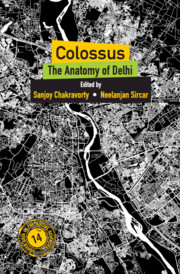PART 2 - Social and Political Change: Overview
Published online by Cambridge University Press: 31 July 2021
Summary
Does dynamic urbanization in the National Capital Region (NCR) engender social and political change? As discussed in the Introduction, the principle that urbanization leads to social change is almost viewed as a “law” of social science in the West. The literature in India has been more circumspect. When one considers the structural social inequalities imposed by India's caste system and gender biases imposed by a deeply pervasive patriarchy, phenomena that still very much exist in India's cities, it is easy to see why scholars of India have not picked up these Western frameworks with alacrity. But just because social inequalities remain pervasive does not mean that urbanization is inconsequential for social behavior. The answer, as our chapters in this part of the volume show, is more complicated. The social and political gains from NCR's urbanization are highly uneven.
Community and State
The first part of this volume characterized life in the NCR at the metropolitan scale, with an explicit focus on the “spatial inequalities”—in terms of caste, wealth, and access to infrastructure and public services—that characterize the region. By looking at quantitative data across the breadth of the NCR, we were able to develop a deeper understanding of various social and economic inequalities across the expanse of the region and how they are interconnected. If the first part of this volume focused on the breadth of the NCR, the second part focuses on details about its residents—in particular, how urbanization affects households and the societies in which they live. We find it useful to think about this part of the volume as analyzing how life in the NCR structures interactions within and across communities, as well as with the state.
The first set of questions we ask are about communities. By this, we mean the role that urban conditions in the NCR play in breaking “traditional” community structures that limit interactions and mobilities across caste, religion, and gender. Do the changing patterns of spatial location highlighted in the first part of the volume change the way in which people from different caste or religious groups interact with each other? Are there “new” communities formed by these changing patterns of spatial location?
- Type
- Chapter
- Information
- ColossusThe Anatomy of Delhi, pp. 215 - 220Publisher: Cambridge University PressPrint publication year: 2021

